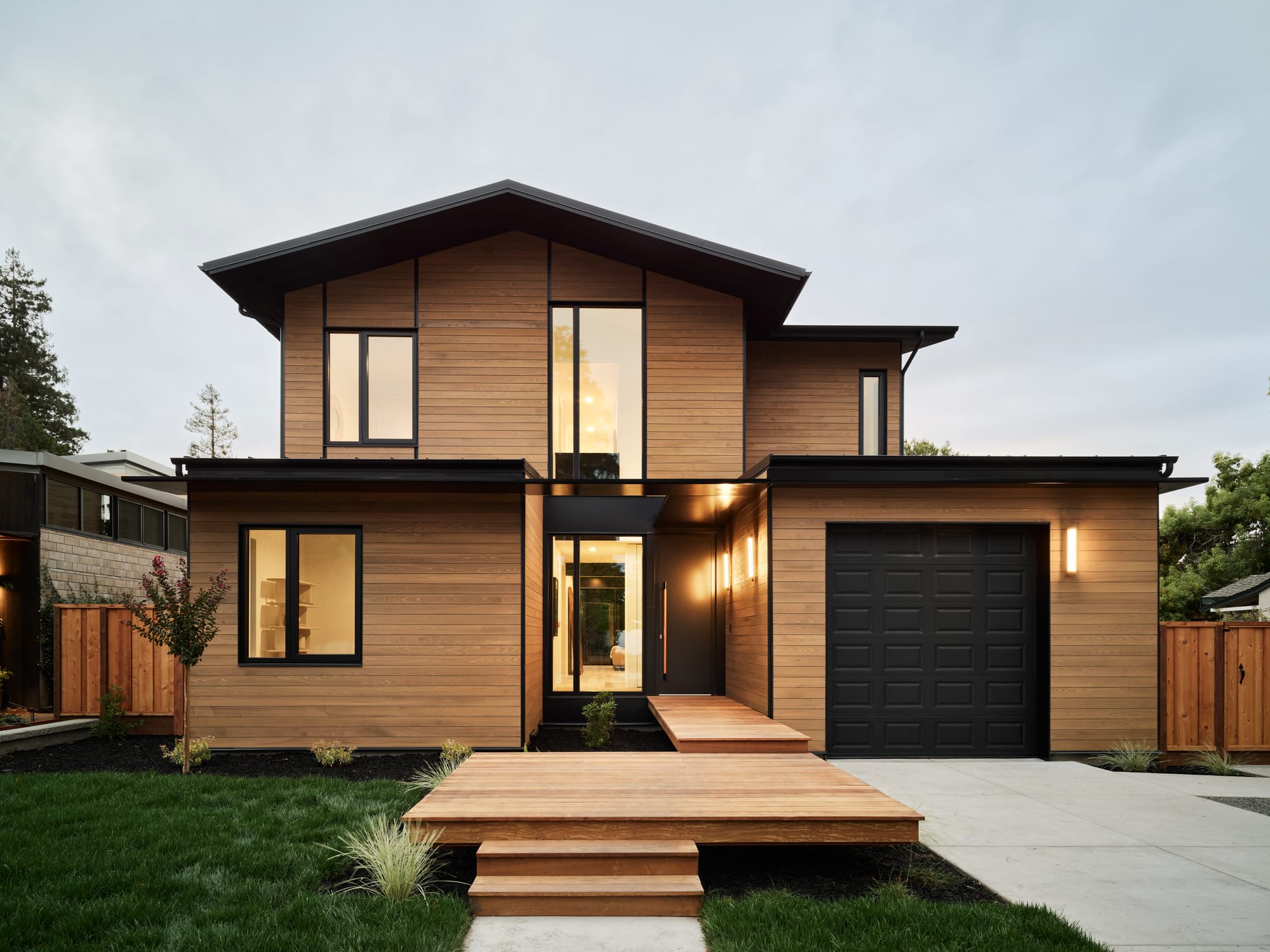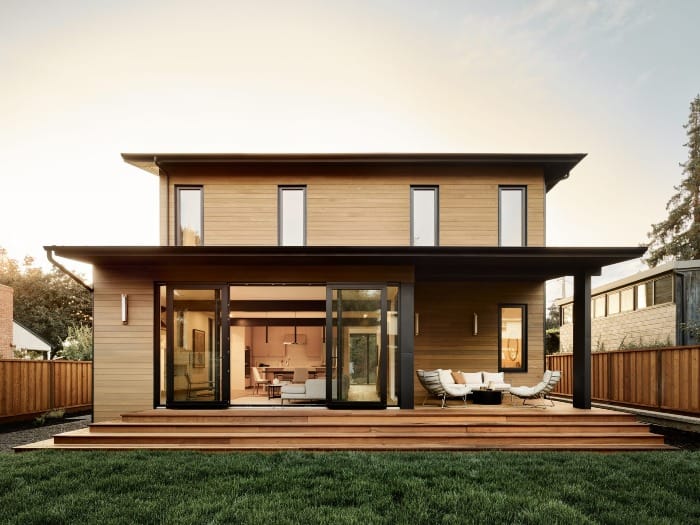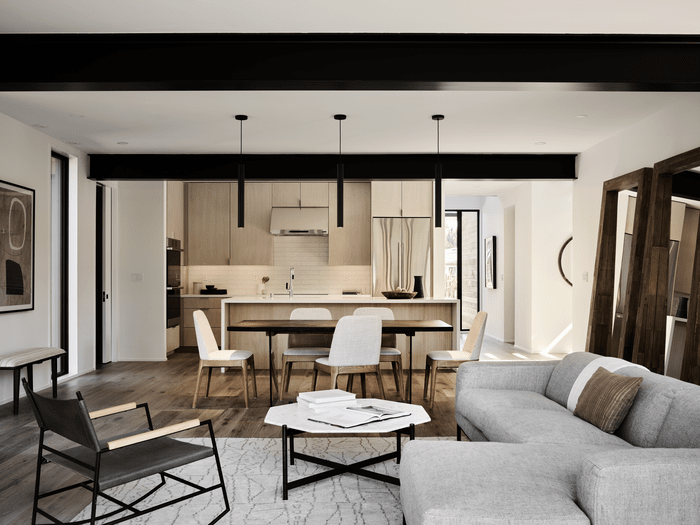Aro Homes: Building Innovative Homes Toward a Carbon Neutral Future
We’ve reached a significant milestone at Aro Homes: After two years of planning, designing, sourcing and building, we’ve completed and sold our first home.

We’ve reached a significant milestone at Aro Homes: After two years of planning, designing, sourcing and building, we’ve completed and sold our first home. Now that we have validated this first phase of our strategy, we want to share a bit more about our purpose and what we are striving to accomplish.
Aro Homes exists to improve the lives of the people who live in our homes, the people who are part of our team, and to do good for the environment. Our ambition is to prove out an alternative and measurably better approach to residential home building. Aro Homes was founded under the premise that we can build exceptional, environmentally positive homes faster and with less waste.
We believe homes are the most important products people will ever own. Homes are sanctuaries, where families grow and evolve and where our most cherished memories are made. Homes should reflect the important role they play in people’s lives, the communities in which they exist, and the environment of which they are part.

And yet the housing industry has been slow to change. Too often, shortcuts are taken, design is not intentional, and quality is poor. It’s a running joke in the industry that every home is a prototype. And there are 86 million of them, with a chronic shortage of new, well-built homes. This situation isn’t deliberate—there are structural reasons progress hasn’t been made. But everyone knows the current system is wasteful and slow, delivering homes that are bad for the environment and that fail to capitalize on opportunities to enhance people’s well-being.
We are challenging this status quo. We believe there is a fundamentally faster and more efficient way to build objectively better homes—homes that improve people’s lives and do good for the environment. It’s not that we are smarter than others. But by studying both what has worked and what hasn’t, and by adapting practices and solutions from other industries, we believe we can more efficiently deliver homes that are more livable, healthier, less expensive to live in, and engineered to eliminate carbon emissions.
The problems with today’s homes
Today’s homes bring a number of serious shortcomings. The first is that they carry a huge environmental footprint, with residential housing responsible for 23% of global emissions. This footprint comes from both construction (embodied carbon) and daily operation (operating carbon). Using data from the Carbon Leadership Forum, the EIA and AIA DDx, it’s estimated the average equivalently sized new home creates over 200 tons of CO2 during its useful life of 60 years - between carbon emitted during the build process and the operational CO2 emitted every year. This carbon footprint is due to a combination of inferior build quality and materials, inadequate insulation, and inefficient systems.
In addition, homes today also suffer from several marked inefficiencies in build and design. First, the average home takes over 12 months to build once crews hit the construction site—a byproduct of supply chain inefficiencies and outdated construction practices. This is a major contributor to our inability to solve our nation’s housing shortage. Second, up to 30%+ of the materials delivered to construction sites end up in a landfill, according to NCBI. Third, the traditional stick-built design approach is ad hoc and outdated, leading to delays and human error, and precluding a more precise and controlled approach to building. Taken together, these inefficiencies are a significant contributor both to our environmental crisis and to our inability to solve our housing shortage.
Another shortcoming of today’s homes is the homeowner’s experience. Product-driven companies in a wide array of other industries have spared no expense optimizing user experience, driving down cost, and investing in beautiful design. And yet, regarding homebuilding at scale, we have yet to see major innovation in any of these areas. Most homebuilders are willing to compromise livability to drive down cost. The same goes for durability and cost of ownership. Because we all spend most of our time in our homes, especially with the rise of remote and hybrid work, the potential value to be added through user-tested floor plans and expert, thoughtful designs is tremendous.
A vision of better homes for tomorrow
The shortcomings of today’s homes exist for a reason. In the short run, it’s easier and cheaper to continue doing things the way they’ve been done for the past hundred-plus years. And yet we’re surrounded by countless examples of how everyday products have been refined and optimized over time—from electronics to cars to software to space travel.

From the very beginning at Aro Homes, we’ve studied and been inspired by these examples, and we’ve been determined to view housing as a product that can likewise be refined, optimized and scaled in new and better ways—despite all the reasons this hasn’t happened yet. We’ve oriented ourselves toward addressing the three main housing challenges outlined above. So, what are we doing to solve those challenges?
- We are reducing our environmental footprint through careful attention to energy efficiency and sustainability in all key facets of our homes.
- We are increasing efficiency by building a limited number of optimized designs and using a hybrid on site/off site construction approach.
- We are improving the homeowner experience from layout and flow to durability and dependability and operating costs that fall within the realm of homeowner experience.
In closing
We’re enormously grateful and appreciative of the hard work and dedication of the whole Aro Homes team, including our partners. Our approach requires deep cross-functional and multi-disciplinary collaboration, and we are blessed to have an incredibly passionate and capable team committed to building an exceptional, enduring company. We believe that a culture of respect, hard work, collaboration, and courage are essential to achieving our ambitions and to creating a company we can all be proud of.
Thanks to our team’s capabilities, we’ve made rapid and substantial progress. We have all the confidence in the world in our process and in our homes. At the same time, we acknowledge that it’s still early, and we have a lot more work and learning to do. We know there’s no guarantee of success.
But what if we are successful? Imagine a world where all of us can live in significantly better homes that are better for the environment, are drastically more efficient, and are built an order of magnitude faster than the homes we grew up in.
We believe this is a future worth fighting for, and that’s why we’re on a mission to deliver better homes that accelerate our progress toward a carbon-neutral future.
Read the next blog post to learn how we are solving these challenges: The Unspoken Challenges of Today's Homes: How Aro Homes is Tackling Them.
This blog post was written by Carl Gish, co-founder and co-ceo of Aro Homes.

